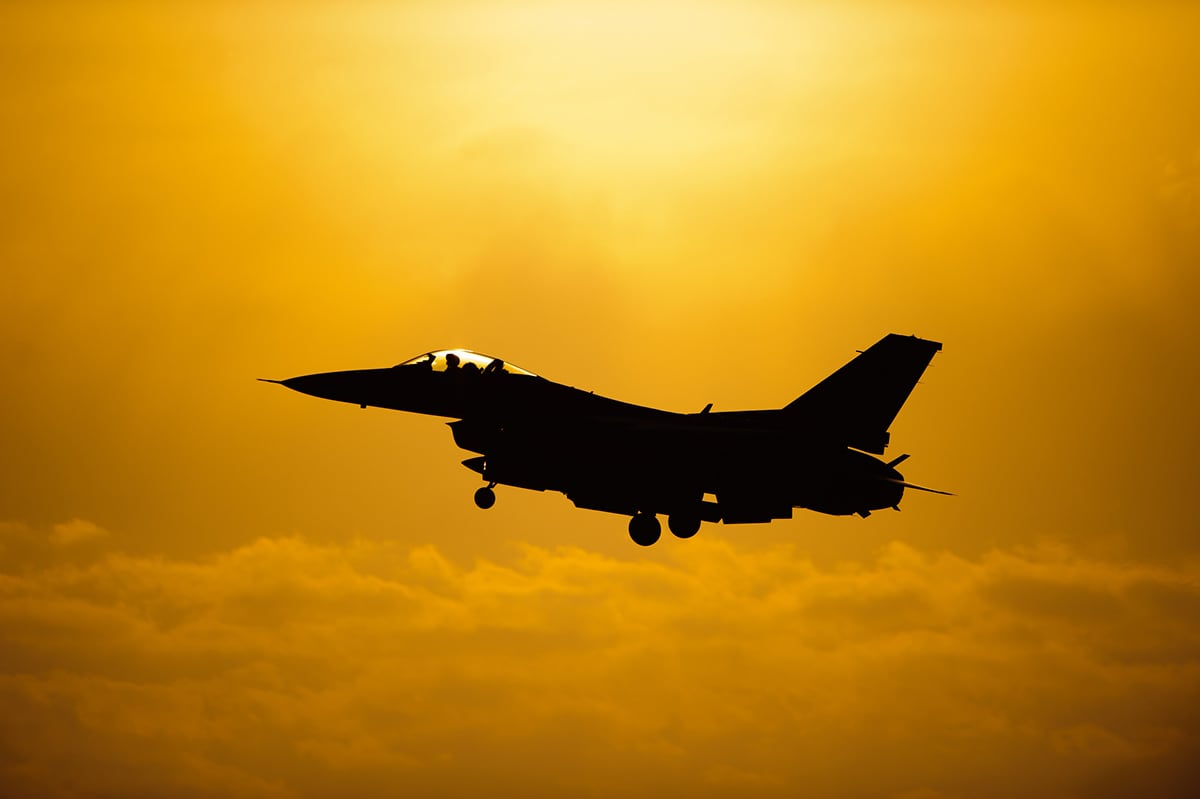Two F-16Cs crashed during a training flight after colliding head-on in midair because one of the pilots failed to “ensure flight path deconfliction and separation of aircraft,” an Air Combat Command Accident Investigation Board has determined.
The collision occurred at Bulldog Military Operation Area near Louisville, Georgia, on June 7, 2016.
“Both pilots were unable to regain control of their aircraft and ejected shortly after the collision, sustaining minor injuries,” according to an Air Force statement.
The incident happened during a nighttime training flight, or sortie, while the aircraft were maintaining visual separation. Pilot two was flying several miles behind pilot one, when pilot two radioed in that his aircraft was low on fuel and needed to immediately return to base.
After that radio transmission, though, pilot one failed to make a “knock it off” call, which would terminate tactical maneuvering for all aircraft that were part of the training sortie. Without a “knock it off” call, the aircraft continued tactical operations, using visual separation, and further degraded radio communication between both pilots.
Additionally, pilot one made an immediate left turn to return to base.
Pilot two saw pilot one’s lights and began to follow, but he misjudged the separation between their aircraft, as well as the sharpness of pilot one’s left turn.
The abrupt left turn of pilot one’s aircraft made it so pilot two was no longer following pilot one, but headed directly towards him.
RELATED

“Pilot two had already begun to follow the first aircraft’s external lights using visual cues, but did not cross-check available sensors to confirm pilot one’s position,” the report summary reads. “Pilot two did not realize that pilot one was heading directly towards him and pointed directly at the first aircraft’s external lights in an attempt to acquire a visual mode radar lock while descending from his sanctuary altitude.”

“At the last fraction of a second, both aircraft initiated a left bank away from the other and their high right wings collided,” the statement adds.
The investigation board president concluded the cause of the mishap was pilot two’s failure to fulfill his primary responsibility to ensure flight path deconfliction and separation of aircraft.
Additionally, the board identified two other factors that contributed to the mishap, one of which was that the first pilot did not terminate tactical maneuvering following pilot two’s low fuel call. The other contributing factor was that both pilots relied too much on visual cues from external aircraft lighting to judge critical flight parameters.
Both pilots were from the 169th Fighter Wing, out of McEntire Joint National Guard Base, South Carolina, although they were in separate squadrons. Pilot one had 1,961 flying hours in the F-16, and pilot two had roughly 1,677 flight hours in that aircraft.
At the time of the mishap, both pilots were medically qualified for flying duties.
The total loss to the U.S. government was estimated to be $60.8 million, and the environmental clean-up cost was estimated at $90,000.
Kyle Rempfer was an editor and reporter who has covered combat operations, criminal cases, foreign military assistance and training accidents. Before entering journalism, Kyle served in U.S. Air Force Special Tactics and deployed in 2014 to Paktika Province, Afghanistan, and Baghdad, Iraq.





